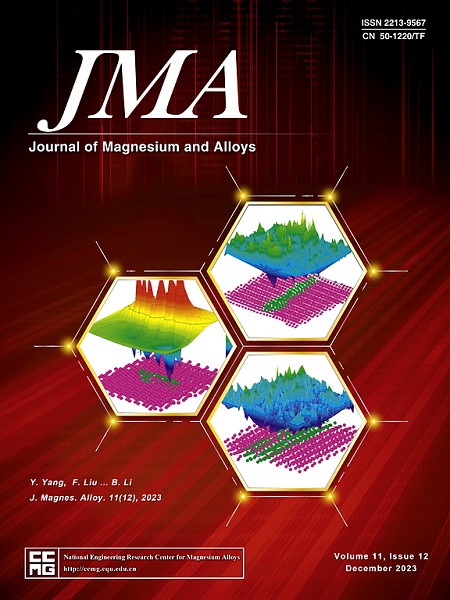az91d - 1% wt真空感应熔液薄壁熔模铸造流动性的优化。曹
IF 15.8
1区 材料科学
Q1 METALLURGY & METALLURGICAL ENGINEERING
引用次数: 0
摘要
本文对az91d - 1% wt的流动性进行了实验研究。薄壁熔模铸造用感应氧化镁熔体。设计和制造带有薄螺旋腔(0.5至1.5 mm方形截面)的石膏模具,以评估铸造条件对填充长度的影响,因为镁合金会导致严重的熔化和熔融-模具放热反应,这使得熔模铸造具有挑战性。研究了传统的mg -模具反应缓解技术的组合,例如应用保护性模具涂层(钇)和真空,以确定它们在填充过程中的作用。结果表明,当采用感应熔炼反应性合金时,这些方法并不总是像最初认为的那样有益。特别是在较高的熔体温度下,氧化钇涂层模具与低压真空感应的结合显著降低了流动性:真空诱导熔体悬浮,促进与残余气氛的氧化;在模具制造过程中,由于热应力引起的钇涂层开裂减慢了填充速度,并促进了显著的熔融-模具反应。本研究表明,在避免真空涂层和保护涂层的情况下,熔模铸造薄壁的效果最好,为支架生物医学设备的精密制造提供了一条可行的途径。本文章由计算机程序翻译,如有差异,请以英文原文为准。

Optimizing the fluidity in thin-section investment casting for vacuum induction molten AZ91D-1 %wt. CaO
This paper discusses an experimental investigation into the fluidity of AZ91D-1 %wt. CaO magnesium melt via induction for thin-section investment casting. Plaster molds with thin spiral cavities (0.5 to 1.5 mm square sections) were designed and manufactured to assess the impact of casting conditions on filling length, as magnesium alloys cause severe melting and melt-mold exothermic reactions, making investment casting challenging. Combinations of traditional Mg-mold reaction mitigation techniques, such as applying a protective mold coating (Yttria) and vacuum, were examined to determine their role in the filling process. The results suggest that when induction is employed to melt reactive alloys, these methods are not always beneficial, as initially thought. Particularly at higher melt temperatures, the combination of Yttria-coated molds with low-pressure vacuum induction significantly reduce fluidity: vacuum induced melt levitation which promotes oxidation with the residual atmosphere; and Yttria-coating cracking due to thermal stress during the mold fabrication slows filling and promotes significant melt-mold reaction. This study shows that best results to investment cast thin-sections are obtained by avoiding both vacuum and protective coatings, providing a viable route for the precision manufacturing of stent biomedical devices.
求助全文
通过发布文献求助,成功后即可免费获取论文全文。
去求助
来源期刊

Journal of Magnesium and Alloys
Engineering-Mechanics of Materials
CiteScore
20.20
自引率
14.80%
发文量
52
审稿时长
59 days
期刊介绍:
The Journal of Magnesium and Alloys serves as a global platform for both theoretical and experimental studies in magnesium science and engineering. It welcomes submissions investigating various scientific and engineering factors impacting the metallurgy, processing, microstructure, properties, and applications of magnesium and alloys. The journal covers all aspects of magnesium and alloy research, including raw materials, alloy casting, extrusion and deformation, corrosion and surface treatment, joining and machining, simulation and modeling, microstructure evolution and mechanical properties, new alloy development, magnesium-based composites, bio-materials and energy materials, applications, and recycling.
 求助内容:
求助内容: 应助结果提醒方式:
应助结果提醒方式:


